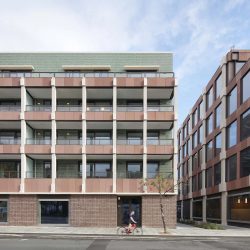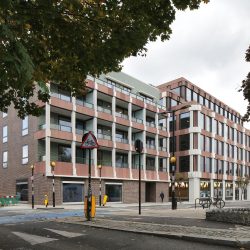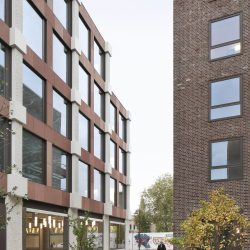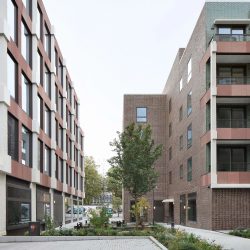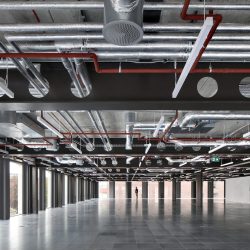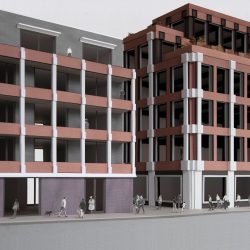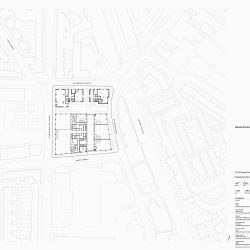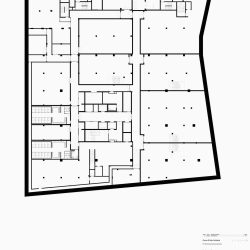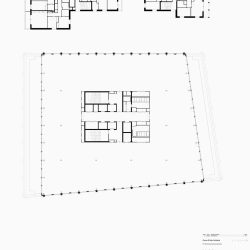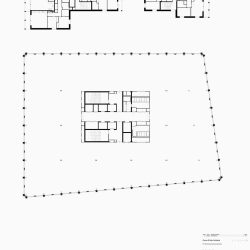
Caruso St John Architects . photos: © Filip Dujardin . + AJ
This project, for the developer W·RE, is located close to St Pancras Station in Camden, in an area of the city that is undergoing substantial change. The site was previously occupied by a block of 1980s light-industrial units and the 24,000 square metre mixed-use scheme accommodates the same area of industrial workspace within a denser development of offices and housing, together with a modest area of retail.
The project occupies a whole city block between the arterial streets of Royal College Street and St Pancras Way. There are three buildings: an office building with deep floors, that accommodates the industrial spaces on the lower levels; and two housing buildings with a total of thirty-three flats. Of the housing buildings, one is intended for social housing, and the other for private rental.
Between the buildings are public spaces with a landscape that provides a route for pedestrians across the site, and a small sheltered garden. At the ground floor, the frontages of the new buildings animate the street edges with their mix of uses. The office building on Royal College Street has a large entrance lobby containing a café and stretching across the whole frontage of the building. The tall, glazed fronts of the industrial workspaces are located towards St Pancras Way. At the north end of the site are entrances to the housing buildings, and small retail spaces on the street corners.
The site lies at a point of transition in the scale of the city. On the north side are the streets of Georgian terraces, and on the south side is the formerly industrial area of King’s Cross—larger in scale—with its historic association with the canal and the railways nearby. The new buildings vary from five to seven storeys in height—from the north to the south side of the site—in response to this changing scale of the surrounding city. To the south are many large buildings from the late nineteenth and early twentieth century, built in red brick, with reduced classical details in stone or stucco. The masonry façades of the office building are intended to take their place amongst these robust structures, avoiding the glassiness of most contemporary office buildings.
The façade’s primary vertical rhythm—made of fluted white precast concrete piers and capitals—is an expression in masonry of the building’s internal steel structure. Dark-painted metal profiles span between the capitals and the red sandstone frame panels. The masonry piers and capitals project from the façade, giving the street elevations an articulated rhythm and pattern. The housing buildings have brick elevations, but also use the same material palette of red stone and white precast in the detail of their balconies. In this way, the three buildings appear as a group, having a family of related details, while also having the variety of scale that is necessary to make a piece of city in this context.
Sustainability is an important element of the design, which includes a high-performance façade. The building is heated and cooled with all-electric systems, altogether avoiding gas, and makes use of on-site energy generation, anticipating an increasingly decarbonised grid.
_
St Pancras Campus
London, United Kingdom
2018–2024
Client: W·RE

